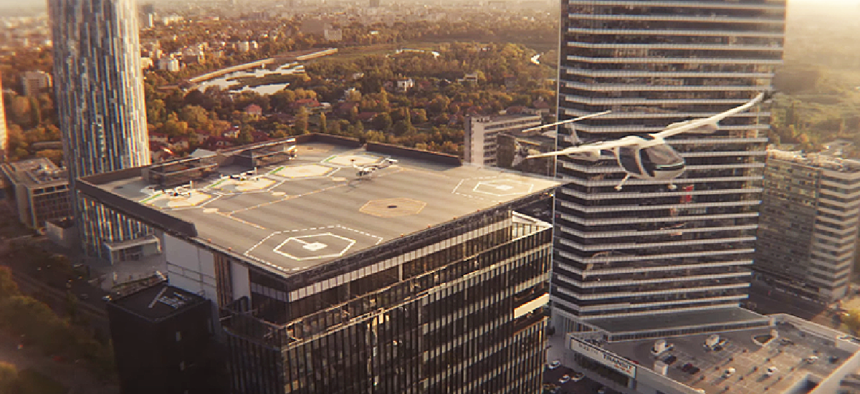Army Research Lab teams up with Uber
The Army Research Lab, the University of Texas at Austin and NASA are working with Uber on its flying taxi service.
The Army Research Lab and the University of Texas at Austin have been chosen as partners for Uber Elevate, the ridesharing company's venture into a flying taxi service dubbed UberAIR.
ARL and UT will work on the rotor technology for the electric vertical takeoff and landing (VTOL) aircraft, which is expected to a cruise at 1,000-2,000 feet, reach speeds of 150 to 200 mph and fly up to 60 miles on a single charge.
The VTOL aircraft will use stacked co-rotating propellers, in which two rotor systems sit on top of each other and rotate in the same direction. Preliminary testing has shown this method is quieter, more versatile and efficient than other approaches for a flying craft.
In May Uber signed a joint work statement with ARL to advance technologies supporting Future Vertical Lift, an Army-led multiservice initiative focused on advanced rotorcraft designs for future aircraft and drones that can carry greater payloads, operate silently and don't need a runway.
"This agreement with Uber displays the Army utilizing innovative approaches to collaborate with an industry partner that is truly on the cutting edge," Jaret Riddick, director of the ARL's Vehicle Technology Directorate, said when the partnership was announced. "It will allow the Army to rapidly advance mutually beneficial technology to inform objectives for silent and efficient VTOL … for the next generation fleet of Army unmanned air vehicles."
Uber is also working with NASA on the development of unmanned traffic management concepts and aerial safety systems. Using its computer modeling and simulation expertise, NASA will assess the impact of small aircraft -- from delivery drones to VTOL passenger aircraft -- in crowded environments.
NASA will use data supplied by Uber to simulate a small passenger-carrying aircraft as it flies through airspace near Dallas Fort Worth International Airport during peak scheduled air traffic. Analysis of these simulations will identify safety issues as these new aircraft join an already-crowded air traffic control system, NASA officials said.
NASA would, for example, "analyze how Traffic Collision Advisories could be triggered by small passenger-carrying vehicles in an air ride share operational model," Jaiwon Shin, associate administrator with NASA's Aeronautics Research Mission Directorate, said in testimony before a House panel in July.
"The results of this research will be made available to the broader [urban air mobility] community. These partnerships may be then expanded beyond modeling and simulation to include system-level flight demonstrations, where we can identify and address safety and integration challenges in increasingly crowded airspace."
Uber has also partnered with aircraft manufacturers that are developing electric VTOL vehicles, including Aurora Flight Sciences (now a subsidiary of Boeing), Pipistrel Aircraft, Embraer and Bell. The company has also entered into real estate partnerships to build the skyports for the uberAIR network.
UberAIR flights will first be tested in Dallas, Los Angeles and Dubai in 2020, the company expects, with commercial operations beginning in 2023.
NEXT STORY: Teaching robots to 'follow the leader'






